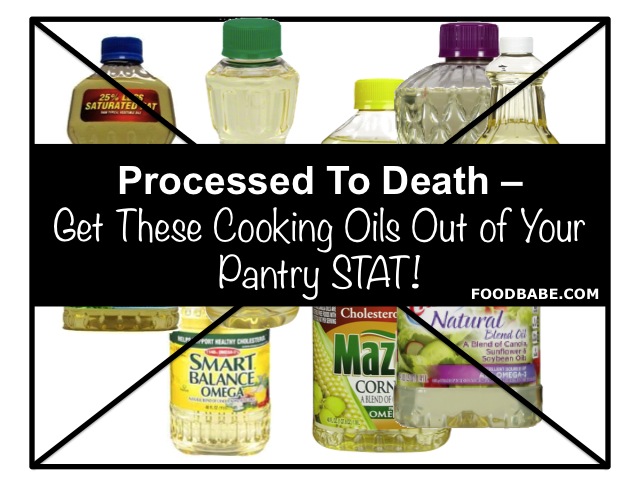
Processed to Death – Get These Cooking Oils out of Your Pantry STAT!
Whenever I see the chefs on Food Network using canola oil I want to scream at the TV… and I have to admit, I sometimes do.
That’s because for years I was misled into thinking that canola oil was healthy and would buy quarts of it. I recently received an email newsletter from “CanolaInfo.org” with their “Top 10 Pantry Essentials” for a healthy 2015, and of course canola oil was at the top of their list. The canola industry is doing an amazing job marketing canola oil as “heart healthy” and “natural”, but it’s a total sham.
February 5, 2015 | Source: Food Babe | by
Whenever I see the chefs on Food Network using canola oil I want to scream at the TV… and I have to admit, I sometimes do.
That’s because for years I was misled into thinking that canola oil was healthy and would buy quarts of it. I recently received an email newsletter from “CanolaInfo.org” with their “Top 10 Pantry Essentials” for a healthy 2015, and of course canola oil was at the top of their list. The canola industry is doing an amazing job marketing canola oil as “heart healthy” and “natural”, but it’s a total sham. I feel the same way about corn oil and recent commercials proclaiming that it’s healthier than olive oil. We’re being persuaded to believe these oils are healthy, thanks in part to the work of the Canola Council, the Corn Refiners Association, and their own (industry funded) research. In reality, these popular oils have been mass marketed as “healthy” largely based on biased research, and after you hear the truth you will avoid them like the plague. Here’s why:
They Are Processed to Death…
Most cooking oils go through an insane amount of processing with chemical solvents, steamers, neutralizers, de-waxers, bleach and deodorizers before they end up in the bottle. If you watch this video on the modern canola oil making process, and you’ll see exactly what I mean.
What they don’t tell you in this video is that the “solvent” that is most often used to extract the oil is the neurotoxin hexane – and as you can see it’s literally bathed in it. Hexane is a cheap byproduct from gasoline production, that’s a serious occupational hazard and toxic air pollutant. It’s been shown that some hexane residue can remain in the oil, and the FDA doesn’t require food manufacturers to test for residues. Residue tests done by the Cornucopia Institute in 2009 found hexane residues in soybean oil. So, we very well could be eating this chemical everytime we cook with hexane-extracted oils. Almost all toxicology research focuses on the industrial use and inhalation of hexane, so no one knows exactly how dangerous eating it is – but it surely isn’t healthy.
